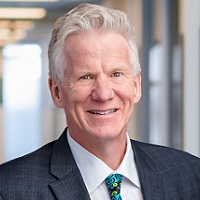 By Nick van Terheyden aka Dr Nick, Principal, ECG Management Consulting
By Nick van Terheyden aka Dr Nick, Principal, ECG Management Consulting
Twitter: @drnic1
Host of Healthcare Upside Down – #HCupsidedown
Becoming a doctor is hard. Medical students progress through basic sciences and foundational learning, diving deep into biochemistry, physiology, and anatomy, gaining detailed knowledge of the workings of the human body at a cellular and now genomic and proteomic level. Then they enter the clinical arena, where they learn by observing and participating with different experts and clinical teams. And then, having completed the coursework and passed their exams, they apply for the next stage—“the Match,” or more formally, the National Resident Matching Program.
Episode NOW on Demand
Taking place every March, the process takes all the applicants who have completed the necessary elements of their medical education and “matches” them to available job opportunities. You might catch some of the excitement on social media, as people have Match parties and celebrate individual success.
But all this is tinged with some unhappiness, as not everyone gets to go to the program they want—and in some cases, don’t match at all. Imagine spending the better part of 8 to 10 years of your life working hard, giving up many other things to focus on studying to become a doctor, only to find yourself without a place to practice medicine.
The raw numbers of the Match tell a different story. As Bryan Carmody explains, we actually have sufficient spots for all of our next generation of doctors to find opportunities and start their careers. But thanks to the highly competitive nature of medicine and the extraordinarily challenging path, the people that do make it through are all high achievers who seek what they consider to be the most prestigious positions and roles.
Bryan is a pediatric nephrologist and associate professor of pediatrics at Eastern Virginia Medical School. On this episode he talks about the need to focus on the competencies and values that we seek from our physicians and the services we need to deliver to our community. Here are a few excerpts.
An evolving classroom.
“If you examine what medical school looks like today compared to previous eras, I think there are significant differences. If you haven’t been in a medical school lately, you may be surprised to see that most students are not in class. When I lecture, I probably have about 25 or 30 students out of a 150-person class. Most students prefer to receive their education from online resources. These days, the most efficient way to learn all the basic science that’s required for first-level licensing exams is to use third-party resources. It’s content that’s designed to be as streamlined as possible. Students gravitate to it because it’s more efficient—and in many ways, to be frank, it’s better.”
A disconnect with the Match.
“We have two systems that are trying to produce physicians who are capable of caring for patients. And yet those two systems are not always pulling in the same direction. Medical school is run by universities, and they have their set of incentives, and residency education is run by hospitals, and they have a separate set of incentives. The connection between medical school and residency is the Match. From my standpoint, we have an arms’ race for medical students to get into the most prestigious or selective residencies or specialties. And that runs at cross-purposes with what we’re trying to accomplish in medical school. It’s a never-ending battle of one-upmanship that doesn’t instill our students with the skills and attributes that we want them to have.”
Training the right number of doctors.
“One problem is that we don’t have any sort of top-down mechanism for determining the number and nature of residency positions that are offered. In theory, all of our residency programs should be training the right numbers of physicians to care for our population. But there’s no authority that says, “we need this many neurologists, we need this many [of this specialty],” and divvies it up. We let individual hospitals make their own decisions about whether to offer a position and we hope it all works out. It wouldn’t be the system that any person would devise if they were building something from ground up.”
About the Show
The US spends more on healthcare per capita than any other country on the planet. So why don’t we have superior outcomes? Why haven’t the principles of capitalism prevailed? And why do American consumers have so much trouble accessing and paying for healthcare? Dive into these and other issues on Healthcare Upside/Down with ECG principal Dr. Nick van Terheyden and guest panelists as they discuss the upsides and downsides of healthcare in the US, and how to make the system work for everyone.
This article was originally published on the ECG Management Consulting blog and is republished here with permission.
